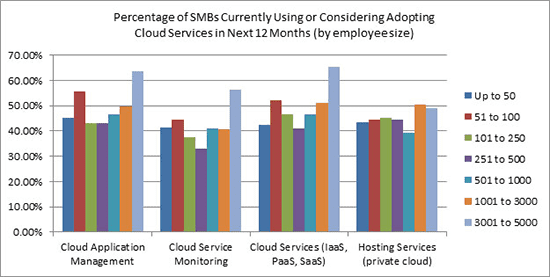Remember the old saying “you won’t ever get there unless you know where you’re going”? This is true for MSPs attempting to craft a high-level strategy.
Many times MSPs focus on short-term financial and business planning, which are often done in quarterly and annual increments, rather than taking the time to create a longer-term strategy. Having a higher-level view of where you want your business to go often makes the shorter-term decisions easier. Knowing your destination greatly increases the chances that you will end up where you want to be.
This section will outline critical elements of a high-level strategy, including:
- Exit strategies
- Verticals
- Growth Expectations
- Technology and Vendor Choice
- Mergers and Acquisitions
- Cloud Technology and Services
So what is a High-Level Strategic Roadmap?
Entrepreneurs are free to run their businesses their way, and as such can choose how to approach building a high-level strategy. For the purposes of this piece, we’ll define what we mean by a high-level strategy and a roadmap that supports it.
A strategic roadmap is a document that defines, at both a high and lower level, what your company is all about and can help establish a plan. The means by which the roadmap as executed is in large part found in the business plan. The business plan is really the structure on which strategic goals are pursued, and tends to be kept more active with recent financials and other details.
Your strategic roadmap needs be detailed enough that is offers true value, and realizable waypoints. That is why this map is all about action – what do you have to do to achieve specific results, who is responsible for what, and when the work needs to be complete.
In order to keep your strategy relevant, your strategic roadmap should be modified to account for important issues and events, such as a major shift in the market, dramatic new technologies, changes in the competitive landscape, a new product or service you need to promote and sell, or a financial disruption.
The Ultimate Conclusion: Start with the End in Mind
Before diving into technology, service strategy and other issues, MSPs must first deal with the elephant in the room. What is the prime reason for creating the business, and the ultimate plan?
After you pour your heart and soul into the business, what do you want to accomplish? What is the end game? For many MSPs, it is selling the company, even if that event is 10 or 15 years away.
Getting your company ready to sell takes a tremendous amount of discipline – and, in fact, this rigor is of benefit whether you ultimately sell or not.
Rick Murphy, CEO of Cogent Growth Partners which helps MSPs find acquisitions, says it is never too early to get your company ready to sell. “Most business owners don’t think about their exit plan until it’s too late to do anything about it, and they unknowingly miss all of the benefits that can come from having the plan in place from day one. While it might seem outlandish to be contemplating an exit while your business is young, professional investors know you don’t invest unless you understand how you are going to exit, and small business owners can benefit from this thinking,” Murphy argues.
“Most IT firms operate under the mistaken impression that liquidity only comes when one sells and retires. That is simply not the case. Liquidity can and should be coming from the business continuously, flowing more and ebbing occasionally over the life of the business, through to an eventual exit.“
Murphy continues, defining the exit strategy as “the blueprint for balancing ‘investment’ in organic growth, while maximizing day-to-day profitability, thus creating consistent liquidity and business value, every day.”
Verticals
This guide contains a whole chapter on whether to go vertical and, if so, which markets make most sense. Verticals are a great way to increase revenue, and because you are offering specialized expertise, dramatically reduce churn.
Here some issues to consider. What kind of businesses are around you? Are you in an agricultural community, an area with lots of medical facilities, or operate near a financial district? Or maybe you are surrounded by colleges and other educational institutions.
Also ask:
- What do you know?
- Are there any verticals you are passionate about?
- How much competition is going after the verticals you are considering?
Growth Strategy
Not every MSP needs to shoot for the stars. You might want a small lifestyle business that suits your passion for technology and taking close care of a small number of customers.
Other MPS want to be a strong local player with high growth, while others have regional, national or even global ambition. Whatever your choice, it helps drive your execution plans such as depth of marketing, office space and hiring.
Technology and Vendor Choice
An MSP is only as good as they technology they use. If your solutions don’t offer top-level service delivery, you can’t support a large and growing base of customers, and what you are able to support is handled poorly. Having scalable tools such as a next-generation RMM, and having these solutions purpose-built for MSPs, is critical.
These solutions, including your PSA, must not just be best of breed, but also easily integrate with the other solutions in your technology stack. The good news is that you’re no longer between a rock and a hard place when choosing between best of breed solutions or a closed integrated solution suite.
Simon Griffiths from Flowgear points out, “Integration has become easier, more cost effective, quicker to implement, and more flexible. Because of this, the advantages that integrated suites used to have no longer apply.” You can both select the solutions with the capabilities that best fits your needs AND deploy these capabilities in an integrated way with your other solutions by selecting vendors who cultivate a robust and open technology ecosystem.”
That means choosing a vendor that is committed to the MSP market, develops next generation tools for service providers, and is always looking for the next revenue-generating innovation. The only constant thing in business for an MSP is change – make sure you are selecting vendors who will partner with you today and in the future, delivering new solutions to enable you to leverage this change into new services and revenue streams.
Mergers and Acquisitions
There are a few reasons acquisition or mergers may be part of your high level strategy:
- Acquiring an MSP (or multiple providers) is no longer just about buying a client list. Today, acquisitions are focused more on quickly expanding your service portfolio and/or your geographic footprint.
- A merger with another MSP accomplishes many of the same net results as an acquisition. However, in mergers, there needs to be even more focus on bringing the right people and expertise together.
At first glance, acquisitions can seem the most expensive way to expand an MSP’s services portfolio. However, many MSPs calculate that, in the long run, it’s the lower-cost option once they consider several ‘hidden’ costs of developing new services from scratch. Creating the right service, choosing the best technology, training staff, pricing and marketing the service – all of these may go right the first time out the gate. However, much more likely, there will costly iterations before everything is working smoothly. And in that time, another MSP may have swooped in and taken the market from you.
A merger with a complementary partner may be the way to get the best of both worlds, by addressing the capital requirements for an acquisition, and by providing a speedier time-to-market than organic growth. Deciding which route to take depends, as always, on the business and market factors your individual MSP faces, such as the competitive landscape, capital flexibility, internal staff experience, etc.
The Cloud
Small- and medium-sized companies are increasingly following their enterprise-class peers in leveraging cloud services to improve business performance. Their internal IT groups view the cloud as a strategic enabler, allowing them to offload routine, repetitive tasks, scale at will, and focus their efforts on innovative IT projects to improve customer and end-user experience.
Kaseya’s recent IT Operations Survey underscores this transition – with cloud services being the most popular services either currently in use or being considered by small and medium-sized business (SMBs) over the next twelve months. Companies of all sizes – from less than 50 employees to up to 5,000 – are leveraging cloud services.

So, the opportunity is clear. The question is how to make the most of these market changes for your MSP. Based on the conversations with MSPs who are scaling up their cloud services, here are the 5 steps that MSPs sometimes skip – to their great sorrow.
Cloud Tip: Do Your Research: Rate Your MSP
Rigorously evaluate how prepared your existing organization is to fully support any cloud service offering – from migration (or adoption) through monitoring, management, configuration, security, compliance, backup, support, upgrades, etc.
Unless you’ve adequately thought through the entire lifecycle of support, you can’t fully select the best go-to-market approach (including technology and pricing model) that will ensure a profitable service offering in the long run.
Cloud Tip: Walk Before You Run
This tip does not translate into starting small. If you decide the best cloud service your MSP should offer is full-service private cloud hosting – go for it! But you should decide the best first step – and then take just that step.
For the love of all that is good and holy, don’t take a scattershot approach – starting this service, and then pivoting to another – the MSP equivalent of throwing everything against the wall and seeing which service sticks.
Or equally mistakenly, offering the service that your loudest customer is clamoring for.
Without a complete understanding of how a new service impacts your entire organization, an investigation into systems and solutions that empower your staff to provide world-class cloud services, and a clear-sighted understanding of the revenue or cost impact of these new services on your organization, you could much more easily jump into an unsuccessful (and profit negative) services engagement.
Cloud Tip: But Get Ready for the Road Ahead
However, just because you should proceed deliberately with your journey, doesn’t mean that you don’t consider future needs as you consider your options.
While you may know exactly the capabilities your MSP needs today – both in terms of managing your business and offering services to your clients – the landscape is changing too quickly for you to only consider your current requirements. You need to make sure that you don’t regret today’s IT decisions tomorrow.
For others, they want a life-style business that they will transfer to a business partner or child upon retirement. Still others dream of creating a larger regional, or even international, business that grows via acquisition.
Of course, you may change your mind over the years – maybe many times over. However, it’s still critical that you articulate your ultimate goals for your business before you put together the other elements of your strategy.
Want more insight on strategic planning, setting business goals, and hitting the right metrics? Download your free copy of A Winning Hand: 21 Cards to Play for Total MSP Success.





